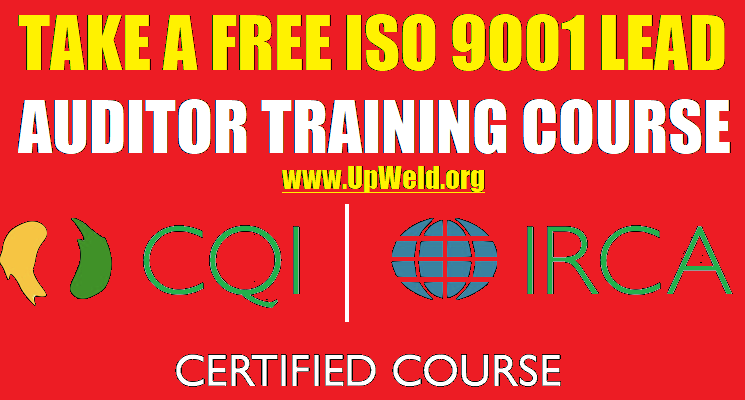Take A Free Online ISO 90012015 lead auditor training course (CQI /IRCA certified)
Contact us for Training and Certification ISOCert.in@Gmail.com

Are you looking for Free Online ISO 9001 2015 Lead Auditor Training Course?
If yes Then you are at the right plateform, Here You Can Learn everything you need to know about ISO 9001 2015, In this free online ISO 9001 Lead Auditor course learn how ISO 9001 2015 offers a framework for organizations to maintain Quality Management System.
This free online ISO QMS Lead auditor course cover organizations how to maintain Quality Management System according to the ISO 9001 2015 standard.
There are 11 Modules, which are given to the iso 9001 Lead auditor training online course, Here you can Prepare for the ISO 9001 Lead Auditer Training and certification Course, The 11 Modules are listed below.
ISO 9001 Lead Auditor Quality Management System QMS Training Course Content:
- Module – Introduction to ISO 9001 and quality management systems
- Module – The planning phase
- Module – Quality management operation
- Module – The Check and Act phases
- Module – Auditing basics
- Module – Understanding auditing standards
- Module – Understanding audit roles and responsibilities
- Module – Planning the audit
- Module – Managing the audit process
- Module – Managing your audit team
- Module – Completing a successful audit
This ISO 9001:2015 quiz Course presents multiple choice questions. You are to assume there is ONLY ONE CORRECT ANSWER. There are lots of questions.
Request for Certificte at ISOCert.in@Gmail.Com
Note: The ISO 9001 Internal Auditor certificate cost is 25 dollars. Certificate will provided by UpWeld.
If you want an IRCA/CQI Approved ISO 9001 Lead Auditor Certificate, then you need to attend our training seminar. The IRCA/CQI Approved Training and Certification Fees is 350 dollars.
How can I get the internal auditir certificate for 25 $ . I have passed the exam.above
Mervatman@hotmail.com
how to down load ISO 9001 Lead Auditor certificate EXAM was writtend online
ISO 9001 Baş Denetçi Sertifikası nasıl indirilir? Sınav çevrimiçi yapılmıştır.